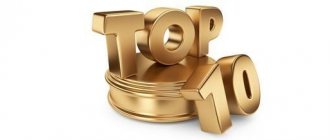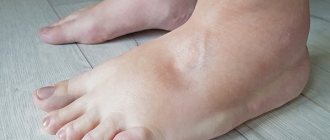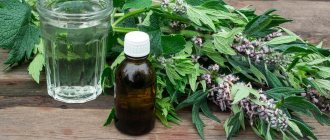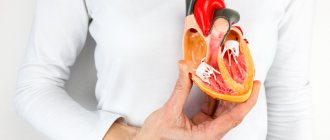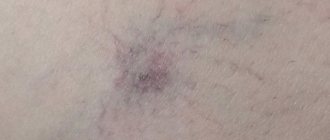Every person experiences headaches from time to time. It is associated with various external factors and goes away quickly without taking pills. 15% of people suffer from frequent, severe headaches. Doctors at the Yusupov Hospital conduct their examination using modern instrumental and laboratory diagnostic methods.
For headaches, people prescribe analgin, no-shpu, askofen, citramon. They relieve pain, but do not affect the cause of the pain. After determining the cause of the headache, doctors at the neurology clinic carry out complex therapy. Rehabilitation specialists use innovative non-drug treatments.
Professors and doctors of the highest category discuss complex cases at a meeting of the Expert Council. Leading specialists in the field of headache treatment collectively develop further tactics for patient management. Patients have the opportunity to undergo complex examinations and treatment at partner clinics of the Yusupov Hospital.
Top 9 drugs for headaches depending on its cause.
June 1, 2021
20714
3.6
1
Content
- Why does my head hurt?
- Groups of drugs for headaches
- Analgesics
- Antispasmodics
- Vasoconstrictor drugs
- Nonsteroidal anti-inflammatory drugs
- The most effective pills for headaches
- Aspirin
- Paracetamol
- Citramon
- Tempalgin
- Pentalgin
- Spazgan
- Nurofen
- No-Shpa
There is probably not a single person who has not experienced a headache at least once in his life. Moreover, this also applies to absolutely healthy people. Headache varies in severity, often impairing quality of life and reducing performance. Therefore, there are head pills in every home medicine cabinet.
But you need to understand that there is no universal remedy for headaches, because there are about 40 causes that cause them. And only a doctor can determine exactly why you have a headache. If you need to quickly relieve pain, we suggest you at least figure out which headache medication you need to take in a particular case.
Read also How to treat migraine: the best drugs Top 5 best drugs against migraine
HEADACHE: PATHOGENETIC TYPES AND APPROACHES TO PATHOGENETIC PHARMACOTHERAPY
Since modern medicine does not have methods for objective verification of headaches, semiotics is of decisive importance in its diagnosis - a set of signs and features of the manifestation of subjective symptoms that the patient presents to the doctor in the form of complaints. Headache is a symptom, and therefore all attempts to classify it from a nosological position are baseless. At the same time, attempts at pathogenetic systematization and classification are certainly justified, since the identification of pathogenetic types of headache reveals approaches to the main directions of pathogenetic therapy. Experience shows that from a scientific and practical point of view, the following pathogenetic types of headaches can be distinguished: vascular, muscle tension, liquorodynamic, neuralgic and psychalgic. It should be emphasized that the names of these types are deliberately simplified so that the semantic content of these definitions is clear to doctors of different specialties. 1. Vascular type of headache
The vascular type of headache is associated with different types of craniocerebral arteriovenous dystonia. These variants of regional dystonia very often do not correlate with the main indicators of systemic hemodynamics. Arteriodilatatory (arteriohypotonic) variant of the vascular type of headache
associated with a decrease in the tone of the craniocerebral arteries.
This leads them to excessive stretching of the pulse volume of blood. Thus, the so-called pulsating headache is not a sign of vascular pain in general, but only of its arteriodilatatory variant. Excessive pulse stretching of the hypotonic arterial wall can occur even at normal levels of systemic arterial pressure, but more often when it increases. If the artery of the soft integument of the head is subjected to excessive pulse stretching (for example, the superficial, temporal artery), then compression of its adductor trunk in the temporomygomatic region with a finger can reduce throbbing pain. In some cases, the loss of autoregulation extends to arteriovenous shunts, which inappropriately expand, and then arterial blood, bypassing the capillary bed, enters the veins. Intravascular pressure, unusual for veins, adds to arterial pulsating pain a venous component that is uncharacteristic of venous pain itself. The extreme degree of arterial hypotension - paretic arterial dilatation (loss of arterial autoregulation) - is accompanied by impaired permeability and plasmatic saturation of the arterial wall, perivascular edema. Under these conditions, the amplitude of the pulsation decreases and the headache may lose its pulsating character. The throbbing pain gives way to a dull pain and becomes aching or bursting in nature. In the genesis of such pain, allogeneic vasoneuroactive substances take part, which, when permeability is impaired, penetrate into the vascular wall and perivascular tissue along with plasma. The arteriopathic variant of the vascular type of headache
occurs with “spasm” of the craniocerebral arteries.
From a practical point of view, by arterial “spasm” we can mean such a degree of increase in arterial tone that entails ischemic discirculation and ischemic hypoxia. In this case, the headache can be aching and dull in nature, perceived as a feeling of pressure, accompanied by lightheadedness, nausea, unsystematic dizziness, darkening in the eyes, “black spots” before the eyes. The venous variant of the vascular type of headache
(otherwise known as venous insufficiency headache) is caused by excessive blood filling of the venous vessels (veins and venous sinuses) and difficulty in venous outflow. Patients experience heaviness in the head and a feeling of dull fullness. In some cases, these sensations are limited to the occipital region, where the confluence of intracranial venous vessels is projected. However, due to multiple intracranial vein anastomoses, these sensations are usually generalized throughout the head. Venous outflow is more effective in a vertical position, when the direction of gravity (blood mass in the vessels) coincides with the direction of the venous outflow tract (jugular veins). Therefore, venous insufficiency headaches occur or worsen when lying down, working with the head bowed low, when straining or coughing. One of the characteristic symptoms of venous insufficiency headache is morning headache (“heavy head as soon as I opened my eyes in the morning”). Insufficiency of venous tone and venous outflow is confirmed by dilation of the veins of the fundus, cyanosis of the mucous membranes of the nose and oropharynx, pastiness of the face, in particular the eyelids (especially the lower ones). The nature of craniocerebral angiodystonia can be objectified using rheoencephalography (REG), the indicators of which reflect the state of the tone of the arteries and veins, as well as venous outflow. In order not to be mistaken in assessing these indicators and the role of certain changes in tone in the genesis of headaches, it is necessary to make at least two REG recordings - during a headache and during a period of well-being. It should be remembered that the increase in the tone of the craniocerebral arteries can be compensatory in nature and does not require correction with antispasmodics. To clarify the state of tone and determine the reactivity of the craniocerebral arteries, an REG is recorded with a pharmacological test (1/4-1/2 tablets of nitroglycerin under the tongue). To clarify the degree of venous insufficiency, REG is recorded in different body positions: sitting, lying (with and without a pillow), with the head lowered below the horizontal. Indirect information about the condition of intracranial vessels can be obtained by examining the arteries and veins of the fundus. The vascular type of headache is observed with migraine, regional craniocerebral form of vegetative-vascular dystonia, with arterial hypertension of various origins, including against the background of cerebral atherosclerosis, with systemic vasculitis. For the arteriohypotonic variant of the vascular type of headache, migraine attacks, ergotamine, dihydroergotamine, sumatriptan are prescribed, and for vegetovascular dystonia, xanthine drugs are prescribed: aminophylline, pentoxifylline, xanthinol nicotinate. For the arteriospastic variant, drugs that have an antispasmodic effect: phosphodiesterase inhibitors (papaverine, no-shpa), adenylate cyclase activators (vinpocetine and other Vinca minor drugs), a-adrenergic blockers (pirroxan, dihydroergotoxin, nicergoline), calcium antagonists (nifedipine, nimodipine) . For headaches of venous insufficiency, xanthine drugs are most effective. The effectiveness of pathogenetic treatment of vascular headache increases with adequate pharmacotherapy of the underlying disease. In cases where vascular headache is caused by a combined variant of arteriovenous craniocerebral dystonia, they try to isolate the key link in the pathogenesis and prescribe adequate therapy with appropriate vasoactive agents.
2. Muscle tension headache
Occurs when the muscles of the soft integument of the head are tense or compressed. Patients experience a sensation of the head being pulled together by a bandage or hoop. The pain can be local (forehead, crown, cervical-occipital region), but usually quickly generalizes, because the tension of one muscle is transmitted to other muscles through the tendon anoneurosis of the helmet. Tension headaches can occur in two ways. Firstly, under the action of central or systemic factors that facilitate and enhance transmission at the neuromuscular synapse, for example, stress during neurosis (“neurasthenic helmet”), or acting in a similar way, and humoral-hormonal changes (for example, in thyrotoxicosis), as well as during all cases of psychophysiological (psycho-emotional or psychophysical) failure in somatic diseases, especially with a progressive course (hypertension) or incomplete readaptation after somatic or infectious-toxic diseases, as well as after head injury. Another mechanism can be defined as segmental reflex, when tension in the muscles of the soft integument of the head occurs in response to pathological painful impulses during local processes (disease of the eyes, ears, paranasal cavities, cervical osteochondrosis). According to the traditional view, muscle tension headache is objectified by an increase in the potentials of electrical activity of the muscles of the soft integument of the head on the electromyogram. The debatable issue of the existence of tension headaches without tension of the head muscles will be considered when discussing the psychological type of headache. A muscle tension headache may be accompanied by a feeling of lightheadedness and unsystematic dizziness; patients find it unpleasant to comb their hair or wear a hat. The persistence of headaches makes patients irritable, they do not tolerate loud sounds, bright lights, memory and performance decrease. Pathogenetic treatment of pain of central origin includes tranquilizers and antidepressants. With segmental reflex genesis of pain, local methods of influence can play a significant role: lidocaine blockades, physiotherapy, acupuncture; and in the case of diseases of the eyes, paranasal cavities, ears - treatment of pathological processes that caused excessive painful impulses by the appropriate specialists: an ophthalmologist, an otolaryngologist.
3. Liquorodynamic type of headache
Cerebrospinal fluid (CSF) is produced by the choroid plexuses of the ventricles of the brain, circulates in the system of ventricles, cisterns and subarachnoid spaces, is absorbed by the villi of the pachyonic granulations and is sent further along the outflow tract into the venous system. The constancy of intraventricular, cisternal and subarachnoid cerebrospinal fluid pressure is ensured by the consistency of CSF production and outflow. CSF performs both the function of a fluid medium for brain metabolic processes and the mechanical function of a “cerebrospinal fluid cushion” that stabilizes the position of the brain within the strict confines of the intracranial space, limited by the bones of the skull and separated by the falciform process of the dura mater. Any pathological processes that disrupt the described dynamic balance of secretion and outflow, as well as the circulation of CSF, lead to either intracranial hypertension or intracranial hypotension. With increased intracranial pressure, the headache is bursting in nature, patients experience a feeling of pressure “from the inside to the outside,” “from the depths of the brain.” This pain intensifies with straining, coughing, sneezing and depends on the position of the body and head. All positions that impede the circulation of CSF worsen the headache. The rate of increase in liquorodynamic disturbances is also important. With a slow increase in intracranial pressure, adaptive and compensatory changes in the cerebrospinal fluid circulation are possible. Acute hydrocephalus always causes severe headache. CSF circulation disorders with increased intracranial pressure cause “space-occupying processes” that limit the intracranial space, such as tumors, parasitic and arachnoid cysts, brain abscess, cerebral edema due to trauma, inflammation or cerebrovascular accident. Volumetric intracranial processes (tumor, abscess, cyst) are often accompanied by the appearance of focal neurological symptoms, meningeal syndrome, vomiting, and impaired consciousness. Since these processes can cause a state of compression and/or dislocation of the brain that is incompatible with life, it is necessary to use neuroimaging methods - computed tomography (CT) and magnetic resonance imaging (MRI). Indirect signs of disturbances in intracranial pressure and CSF circulation can be obtained using radioisotope scintigraphy. A sign of increased intracranial pressure is venous congestion in the fundus and swelling of the optic nerve head. The dislocation of the middle structures is indicated by the displacement of the middle M-echo. The combination of these symptoms makes it possible to make a correct diagnosis and not be late in consulting the patient with a neurosurgeon to determine the indications and urgency of neurosurgical intervention. It should be remembered that if there is suspicion, and especially if there is objective evidence of displacement of the midline structures, it is unsafe to perform a lumbar puncture. Pharmacotherapy of intracranial hypertension includes dehydrating agents: osmotic diuretics - urea, manitool, sorbitol, glycerin (in the case of normal osmolarity); diuretics of another mechanism of action - furosemide, ethacrynic acid, hydrochlorothiazide, chlorthalidol, clopamide, potassium-sparing diuretics - triamterene, amiloride, spironoloctone. A decrease in intracranial pressure occurs as a result of a decrease in the production of CSF by the choroid plexuses of the ventricles and is accompanied by a dull generalized low-intensity but prolonged headache. Dysfunction of the choroid plexus occurs after a traumatic brain injury or an inflammatory process. The function of the CSF as a “liquor cushion” is lost. As a result, when the head moves or shakes it (for example, when walking), pain-sensitive intracranial structures - vessels, membranes, nerves - are stretched, and pain occurs, which intensifies in an upright position. Because this type of headache occurs after CSF is removed during a lumbar puncture, it is sometimes called a “drainage” headache. Sometimes the puncture site of the membranes after a lumbar puncture “does not close” and for some time CSF leaks through this hole, leading to a decrease in pressure. Drainage headaches are especially intense after a pneumoencephalographic contrast study with the extraction of a large amount of CSF and its replacement with air. Currently, due to poor tolerability, but mainly due to the introduction of CT and MRI into diagnostic practice, this method is not used. A decrease in CSF production can also occur in individuals with a long-term decrease in systemic blood pressure, for example, in patients with a hypotonic type of vegetative-vascular dystonia. If a decrease in systemic blood pressure is combined with hypotension of the cerebral arteries, then with reduced intracranial pressure the amplitude of the pulsation of the intracranial arteries may increase. Then the headache becomes throbbing. A decrease in CSF pressure is confirmed by lumbar puncture; other intracranial and cerebral disorders are clarified using CT and MRI. There are no drugs that could increase the production of CSF by the choroid plexuses of the ventricles. Therefore, indirect approaches can be proposed for treatment. Since the intracranial contents normally consist of the volumes of CSF, brain and intracranial blood supply (especially in the veins), with intracranial hypotension, bed rest is recommended, which increases blood supply, as well as drinking plenty of fluids with a higher than usual content of sodium chloride in food, which leads to a relative increase fluid-containing colloidal mass of the brain. To normalize liquor production, general restoratives and vitamin therapy are prescribed.
4. Neuralgic headache
As stated earlier, this type of pain is classified as facial pain (prosopalgia). They are distinguished by paroxysmal nature, with short paroxysms usually following each other, often causing the patient to suffer from neuralgia for hours or days. Pain, usually piercing, shooting, which, “like lightning” or “electric current”, strikes the patient. The second distinguishing feature is the presence of trigger or trigger zones, the irritation of which provokes an attack. The third characteristic sign is the irradiation of pain to neighboring or distant areas. It is believed that in most cases the cause of facial pain is a focus of pathological activity in the central structures of nociception related to the system of the trigeminal nerve and its central projections [just as the occurrence of an epileptic attack is explained by the presence of a focus (generator) of pathological activity in the systems that regulate the level of wakefulness and consciousness, or systems of motor activity]. For neuralgia of central origin, treatment with antiepileptic drugs, such as carbamazepine, is most effective. In some cases, neuralgia occurs when the sensory nerve is compressed through the mechanism of tunnel syndrome. It is precisely this mechanism that most often occurs with neuralgia of the occipital nerve, which is not included in the group of prosopalgia, but is cranial neuralgia. In these cases, in addition to antiepileptic drugs, they also resort to local effects: lidocaine blockades, physiotherapy, acupuncture.
5. Hallucinatory headache, or psychalgia
The traditional approach to the interpretation of visual or auditory hallucinations requires considering them as an objective sign of mental illness, although no morphological substrate in the form of damage to the structures of the visual or auditory analyzer is found. It is believed that the origin of hallucinations is associated with a neurotransmitter imbalance, leading to the emergence of a focus of pathological excitation in the system of a particular analyzer. A similar mechanism explains hallucinatory headaches that occur during the formation of a focus of pathological excitation (generator) in the central nociception system. Since this focus is formed in the system of structures of the central psycho-emotional perception of pain, the definition of “psychalgia” is applied to this type. It is very important to emphasize the difference between the definition of “psychogenic” (i.e., resulting from psychological stress) headache and the name “psychalgia”. Psychogenic, i.e. caused by stress, can be vascular, muscle tension headache, or neuralgic. And psychalgia itself can be psychogenic when it appears or intensifies after emotional stress. Many authors associate psychalgia with hidden (masked, larved) depression. Many patients with hidden depression complain of pain in the heart, stomach, intestines, etc., while in others hidden depression manifests itself as a headache. This projection of psychalgia onto the head area gave rise to another name - “conversion headache.” An important feature of psychalgia is the absence of specific physical characteristics in the patient’s description of the headache. Instead of specific definitions (for example, squeezing, bursting, pulsating), the patient resorts to vague metaphorical characteristics when describing pain. As a rule, when examined using instrumental methods, no pathology is found in such patients. To treat psychalgia, antidepressants, tranquilizers or antipsychotics are used. If a doctor, during dynamic observation of a patient and after conducting instrumental research methods, diagnoses hallucinatory psychalgia, then it is advisable to refer such a patient for observation to a psychiatrist, since most often the underlying disease is hidden depression.
6. Headache of mixed origin
Previously, different pathogenetic types of headaches in their “pure form” were given. However, we often deal with headaches of mixed origin. Even with migraine, a combination of different pathogenetic types can be observed: arteriohypotonic, venodystonic and muscle tension headache. Even more often, a combination of different headache mechanisms is observed in severe cerebral diseases: stroke, severe traumatic brain injury, meningoencephalitis. Of course, in these cases, the headache, although it requires pharmacological correction, recedes into the background before disorders that threaten the patient’s life. In such situations, the correct combination of symptomatic and nosological pathogenetic treatment is especially important. Summarizing the pathogenetic classification of headache, we consider it necessary to recall that headache is a symptom and as a symptom may not be indicated when formulating a detailed nosological diagnosis or appear in the background or third plan. At the same time, regardless of whether data on headache is included in the diagnosis, all data that allows one to establish the pathological type of headache must be included in medical documents - a medical history or an outpatient card.
Some controversial aspects
of the classification of headaches
As indicated, sharing the concept that a good classification should be based on one defining and dividing sign, in relation to the classification of headache as a symptom, we consider it adequate only to distinguish pathonetic types of headache. Classification according to nosological principle is impossible. All other attempts to group diseases that cause headaches are untenable. However, they have been and are being undertaken (1962 and 1988). Information about the classification of the International Classification Commission of Headaches of the International Headache Society was brought to the attention of neurologists in our country in the article by O.A. Kolosova and V.V. Osipova [1] and in the work of the chairman of this commission and the president of the European Federation of Neurological Societies J. Olesen [2]. The objectives of the article do not include a detailed analysis of the proposed classification. Nevertheless, neurologists in our country should be familiar with the proposals of the International Commission of Experts. The proposed classification divides headaches into 13 groups. Here is a list of these names: 1) migraine; 2) tension headache; 3) cluster headache; 4) various forms of headache not associated with structural lesions; 5) headache associated with head injury; 6) headache associated with vascular disorders; 7) headache associated with non-vascular intracranial disorders; headache associated with the use of certain substances or refusal to take them; 9) headache associated with extracerebral infection (i.e., a general infectious disease - author's note); 10) headache associated with metabolic disorders; 11) headache or facial pain associated with pathology of the skull, neck, eyes ,
2) tension headache; 3) cluster headache; 4) various forms of headache not associated with structural lesions; 5) headache associated with head injury; 6) headache associated with vascular disorders; 7) headache associated with non-vascular intracranial disorders; headache associated with the use of certain substances or refusal to take them; 9) headache associated with extracerebral infection (i.e., a general infectious disease - author's note); 10) headache associated with metabolic disorders; 11) headache or facial pain associated with pathology of the skull, neck, eyes ,
nose, sinuses, teeth, mouth or other facial structures;
12) cranial neuralgia, neuropathy and disafferentation pain; 13) unclassifiable headache. We cannot agree that this list of diseases and conditions can be accepted as a classification of headaches. J. Olesen writes that the first four groups can be classified as primary headaches. In our opinion, only points 1 and 3 can be definitely attributed to primary headache. Point 2 cannot be included regardless of approaches and predilections to interpretations of genesis and names. If we use the previous term “muscle tension headache,” then the headache is secondary either to neurosis or to local pathological processes in the head area. If we use the new term “tension headache,” then it is secondary to depression (or, again, to neurosis). The names of other groups are extremely vague and cannot be considered classification. We believe that the doctor’s thought should follow from the patient’s complaints to establishing the pathogenetic type of headache, from the type of headache to important accompanying symptoms, from the symptom complex that characterizes not only the headache, but the disease as a whole, to the nosological diagnosis of the underlying disease. We wrote about this back in 1987 [3]. The authors who took the trouble to introduce our neurologists to the international classification did not provide the full title of the work of the International Commission either in the title or in the text of their articles, but it reads like this: “Classification and diagnostic criteria for headaches, cranial neuralgia and facial pain.” Therefore, if the division into 13 groups cannot be accepted as a classification, this division and especially the explanation for it can only be considered as a diagnostic algorithm that can be used in the transition from establishing the pathogenetic type of headache to establishing a nosological diagnosis. It is important to understand that the same pathogenetic type of headache can be observed in different diseases and, conversely, with the same disease, the same patient may experience headaches of different pathogenetic types. An example is hypertension. Classics of Russian medicine G.F. Lang and A.L. Myasnikov perfectly described the types of headaches associated with hypertension: neurasthenic, vascular, “typical,” and toxic. From the point of view of our presentation, neurasthenic is a headache of muscle tension, vascular is arteriohypotonic, “typical” is a headache of venous insufficiency, toxic is liquorodynamic. In other words, the essence is the same, the names are simply clarified from the point of view of pathogenesis. Thus, the same patient at different stages of the disease may have a headache of one or another pathogenetic type. Or another example: cervical osteochondrosis. The same patient may have muscle tension headache, occipital neuralgia, headache of vascular origin as part of the posterior cervical sympathetic syndrome (Barre-Lieu vertebral artery syndrome).
Literature:
1. Kolosova O.A., Osipova V.V. Classification of headaches // Journal. neurology and psychiatry named after. S.S. Korsakova, 1996, No. 3, p. 8-11. 2. Olesen J. Diagnosis of headache // Neurological Journal, 1996, No. 3, p. 4-11. 3. Shtok V.N. Headache. M.: Medicine, 1987, 303 p. 4. Classification Committee of International Headache Society. Classification and Diagnostic Criteria for headache disorders, cranial neuralgia and facial pain. Cephalgia 1988;8(Suppl.1.7):1-96.
Why does my head hurt?
The characteristics of headaches can vary in intensity, location, nature of pain, duration, etc. Among the causes of headaches
such:
- osteochondrosis of the cervical spine or cerebral vascular spasms;
- migraine, vascular problems, otitis media, glaucoma and other problems can be suspected by a throbbing headache;
- if the headache lasts for a long time, meningitis, encephalitis, tuberculosis and serious damage to the nervous system are possible.
Regarding the location of the headache,
then it is also different for each problem:
- forehead and eyebrow area: migraine, some eye diseases, inflammation of the sinuses, pneumonia;
- occipital region: neuralgia of the occipital nerve, spasm of the muscles of the head and neck, osteochondrosis, hypertension;
- forehead and temples: sinusitis, pneumonia, sore throat, flu, increased intracranial pressure;
- parietal region: migraine, muscle spasms of the head and neck, tumor processes.
In addition to various diseases, headaches can be caused by weather dependence, stressful situations, lack of sleep, and bad habits. In women, headaches often depend on the menstrual cycle. Men usually have headaches due to overwork, childhood headaches are associated with ARVI, and in old age headaches are caused by problems with the heart and blood vessels.
In any case, uncontrolled use of medications is unacceptable for headaches. If you have frequent headaches, be sure to consult a doctor and get tested to determine the cause.
Consequences
Any disease that is not treated in a timely manner has its consequences for a person. In some cases, the consequences are minimal and go away with proper therapy. Sometimes it happens that a seemingly “frivolous” disease, like a snowball, gains momentum, turning into truly catastrophic consequences for a person. In the case of the abuse factor, sleep disturbances and increased headaches are noted, nausea appears and excessive anxiety appears.
These symptoms last from several hours to 6-8 days, depending on the severity of the initial condition. Therefore, doctors recommend taking care of sick leave or a short vacation in advance during treatment. This measure will allow you to endure the withdrawal of painkillers and sedatives in the most comfortable conditions and without additional stress. As a rule, 2 weeks after stopping medications that provoke abuse factor, the intensity of headaches decreases by more than 50%.
Aspirin
The active ingredient in Aspirin is acetylsalicylic acid. We are sure that this drug is in every home medicine cabinet. “Aspirin” can be taken for inflammatory diseases, problems with cerebral circulation, hangover syndrome, to thin the blood (as a prevention of thrombosis). Aspirin is often prescribed in the complex treatment of vascular diseases. Contraindications include bleeding disorders, stomach and intestinal ulcers, etc.
Aspirin
Bayer Schering Pharma (Bayer), Germany
The drug Aspirin is a non-steroidal anti-inflammatory drug with analgesic, antipyretic and anti-inflammatory properties.
from 5
5.0 1 review
970
- Like
- Write a review
Paracetamol
This remedy is suitable for eliminating headaches of various etiologies and is well tolerated by the body. Paracetamol is an affordable and at the same time very effective antipyretic. An antipyretic drug for children, Panadol, is produced based on paracetamol. Paracetamol for headaches can be taken once, or up to four times a day. The duration of treatment should not exceed five days to prevent overdose.
Paracetamol MS
Medisorb, Russia
Paracetamol is used for: relieving moderate or mild pain (headache, toothache, migraine, sore throat, neuralgia, myalgia);
reducing elevated body temperature during colds and other infectious and inflammatory diseases. Paracetamol is intended for symptomatic therapy, reducing pain and inflammation at the time of use, does not affect the progression of the disease. from 4
5.0 1 review
298
- Like
- Write a review
Sources:
- Scripter C. Headache: Tension-Type Headache. FP Essent. 2018 Oct;473:17-20. PMID: 30346680.
- Espí-López GV, Zurriaga-Llorens R, Monzani L, Falla D. The effect of manipulation plus massage therapy versus massage therapy alone in people with tension-type headache. A randomized controlled clinical trial. Eur J Phys Rehabil Med. 2021 Oct;52(5):606-617. Epub 2021 Mar 18. PMID: 26989818.
- Marks DR, Rapoport AM. Practical evaluation and diagnosis of headache. Semin Neurol. 1997;17(4):307-12. doi: 10.1055/s-2008-1040943. PMID: 9474710.
- MacGregor E.A. Contraception and headache. Headache. 2013 Feb;53(2):247-76. doi: 10.1111/head.12035. PMID: 23432442.
- Allais G, Gabellari IC, De Lorenzo C, Mana O, Benedetto C. Oral contraceptives in migraine. Expert Rev Neurother. 2009 Mar;9(3):381-93. doi: 10.1586/14737175.9.3.381. PMID: 19271947.
- Friedman DI. Headache and the eye. Curr Pain Headache Rep. 2008 Aug;12(4):296-304. doi:10.1007/s11916-008-0050-1. PMID: 18625108.
Published on the portal health.mail.ru
Citramon
Citramon is one of the most frequently purchased and affordable headache medications. Take it if the headache is not severe (against the background of elevated temperature or inflammatory processes). "Citramon" improves vascular tone and stimulates blood circulation. These headache tablets contain caffeine, aspirin and paracetamol, that is, Citramon has a complex effect. But you should not take this drug for a long time so that “side effects” do not develop. The daily dose is a maximum of 8 tablets (no more than three days).
Citramon
JSC "Tatkhimfarmpreparaty", Russia; Anzhero-Sudzhensky Chemical and Pharmaceutical Plant, Russia; Pharmstandard-Leksredstva OJSC, Russia; PrJSC Pharmaceutical Company “DARNITSA”, Ukraine
The drug Citramon is an analgesic drug that has analgesic, antipyretic and anti-inflammatory effects.
The components that make up the drug enhance each other's effects. from 4
591
- Like
- Write a review
Simple analgesic
Their effectiveness has been proven in the most reliable type of study5 - a randomized, double-blind, placebo-controlled study. Only with the help of such studies is it possible to form an evidence base on the effectiveness and safety of the drug. The European Federation of Neurological Societies recommends the following substances for the treatment of headaches:
| A drug | Dose |
| ASK | 1000 mg |
| Ibuprofen | 200-800 |
| Paracetamol | 1000 |
| Naproxen | 500-1000 |
| Diclofenac | 50-100 |
| Metamizole | 1000 |
| Tolfenamic acid | 200 |
| Phenazone | 1000 |
Combined analgesics
They consist of two or more substances and are used when the pain is severe and a simple analgesic does not cope.
Many combination analgesics contain barbiturates, codeine and caffeine, which enhance the effect of the simple analgesic. However, it has been proven that they can cause overuse headaches, i.e. headaches caused by excessive drug intake.
Tempalgin
A complex drug for headaches with a sedative effect. Consider this nuance if your work involves increased concentration. "Tempalgin" is good for relieving headaches of various types. These headache pills can be taken for headaches of varying severity. You can take no more than three Tempalgin tablets per day (if there is persistent pain). The duration of headache treatment should not exceed five days.
Tempalgin
Sopharma, Bulgaria
- moderate or mild pain syndrome (including headache, migraine, toothache, neuralgia, radicular syndrome, myalgia, arthralgia, algodismenorrhea), especially in patients with increased nervous excitability;
- mild pain of visceral origin (including renal, hepatic, intestinal colic) in combination with antispasmodic therapy; — pain syndrome after surgical and diagnostic interventions (as an adjuvant); - increased body temperature during colds and other infectious and inflammatory diseases. from 91
557
- Like
- Write a review
Contraindications
Regardless of belonging to a specific clinical and pharmacological group, pain medications have a general absolute contraindication. This is individual intolerance to the active or auxiliary component.
The vast majority of them are not used during pregnancy and breastfeeding. Or they can be taken after the supervising doctor compares the benefits for the woman with the possible risks for the fetus or child.
Caution is required in patients with severe renal or hepatic diseases.
Pentalgin
"Pentalgin" is also a complex medicine that has anti-inflammatory, antispasmodic and antipyretic effects. "Pentalgin" slows down the production of hormones that cause pain. Usually, taking one tablet is enough to relieve a headache. It is recommended not to exceed a dose of three Pentalgin tablets per day; you can be treated with this drug for no more than five days.
Pentalgin
OJSC Pharmstandard-Leksredstva, Russia
— pain syndrome of various origins, incl.
pain in joints, muscles, radiculitis, algodismenorrhea, neuralgia, toothache, headache (including those caused by cerebral vasospasm); — pain syndrome associated with spasm of smooth muscles, incl. for chronic cholecystitis, cholelithiasis, postcholecystectomy syndrome, renal colic; — post-traumatic and postoperative pain syndrome, incl. accompanied by inflammation; - colds accompanied by febrile syndrome (as symptomatic therapy). from 57
879
- Like
- Write a review
The back of the head hurts during a migraine. Causes and treatment
Migraine refers to a primary headache caused by pathological processes in the tissues of the brain itself. Migraine pain feels like a hoop around the head, but can also be localized in the back of the head. They develop periodically, lasting from 2 hours to several days. They can bother people of any age, but more often women 25–40 years old. Migraine is provoked by nervous tension, insufficient rest, and excessive physical activity. The attack can be relieved by taking analgesics. This should be done in the first minutes of discomfort.
Spazgan
These head tablets relieve vasospasm, relieve inflammation and relieve pain. The effect of taking the drug occurs quickly and usually lasts 4-8 hours. And although Spazgan can be bought without a prescription and is indicated for many types of pain, it is still advisable to consult a doctor before taking it. This headache medication is usually taken as a one-time dose. If you need a different application regimen, be sure to read the instructions to avoid side effects.
Spazgan
Wockhardt, India
Mild or moderate pain syndrome due to spasms of the smooth muscles of internal organs - renal and hepatic colic, spastic pain along the intestines, algodismenorrhea.
Can be used for short-term symptomatic treatment of joint pain, neuralgia, sciatica, myalgia. As an adjuvant it can be used to reduce pain after surgical and diagnostic interventions. If necessary, the drug can be used to reduce elevated body temperature during colds and infectious and inflammatory diseases. from 168
5.0 1 review
1039
- Like
- Write a review
The first table excludes
Thus, it is important for the pharmacist to exclude hypertension, which requires mandatory consultation with a doctor. To do this, you need to ask a few questions.
- Questions about the nature of GB:
- What is the intensity of headache, its nature and localization?
- Are there any accompanying symptoms?
- What causes headache attacks?
- Questions about HD treatment:
- What medications for migraines and headaches has the patient already used or is currently using?
- With what effect?
- Presence of warning symptoms requiring mandatory medical attention:
- Intense headache with a sudden (“explosive”) onset can develop with subarachnoid hemorrhage.
- Headache with an atypical aura lasting more than an hour or motor weakness is characteristic of a cerebrovascular accident - transient ischemic attack or stroke, as well as the presence of an aura without headache, although there was previously migraine with aura.
- An aura that first appears in a patient taking combined oral contraceptives may indicate a risk of stroke.
- Increasing headache that gets worse over several weeks or more, or headache that gets worse with changes in posture, coughing, sneezing, or straining, may indicate the presence of a space-occupying intracranial formation.
- Also requires consultation with a neurologist in headaches accompanied by focal neurological symptoms (shaky gait, unilateral and bilateral paralysis, etc.), and headaches with fever of unknown origin.
- A previous fall or head injury is a reason to see a doctor to rule out a TBI.
The presence of an intense headache, spreading to half of the head, accompanied by nausea, vomiting, sensitivity to light and sound, or a typical aura, may indicate a migraine. Severe (even unbearable) unilateral pain in the temple, orbit, or mixed localization, accompanied by a feeling of anxiety and/or autonomic symptoms on the side of pain, indicates the presence of cluster headache. In both cases, the pain syndrome is poorly controlled by conventional analgesics and requires the prescription of specific therapy by a doctor. Headache accompanied by severe pain in the eyes and blurred vision requires exclusion of glaucoma.
Long-term previous use of analgesics allows one to suspect the development of excessive hypertension, which also requires consultation with a neurologist.
Nurofen
A combined drug with anti-inflammatory, antipyretic and analgesic effects. Nurofen is a good pain reliever. If you have a migraine, and you don’t have the usual medications prescribed by a neurologist at hand, you can take Nurofen once. You can take no more than four tablets per day, with breaks between each dose of at least four hours. It is not advisable to take Nurofen for more than three days.
Nurofen Forte
Reckitt Benckiser Healthcare International Ltd, UK
NSAIDs to eliminate: Headache;
migraine; toothache; algodismenorrhea; neuralgia; backache; myalgia; rheumatic pains; fever with influenza and ARVI. from 9
5.0 1 review
568
- Like
- Write a review
No-Shpa
Typically, No-Shpu is prescribed for tension headaches (stress, emotional or physical stress). This type of headache is usually mild and without throbbing. “No-Spa” is an antispasmodic that relaxes blood vessels and improves blood circulation. The therapeutic effect occurs literally 15 minutes after taking the tablet. You can take no more than two tablets at a time (no more than 8 per day). Moreover, you cannot take No-Shpu on your own for more than two days unless prescribed by a doctor.
